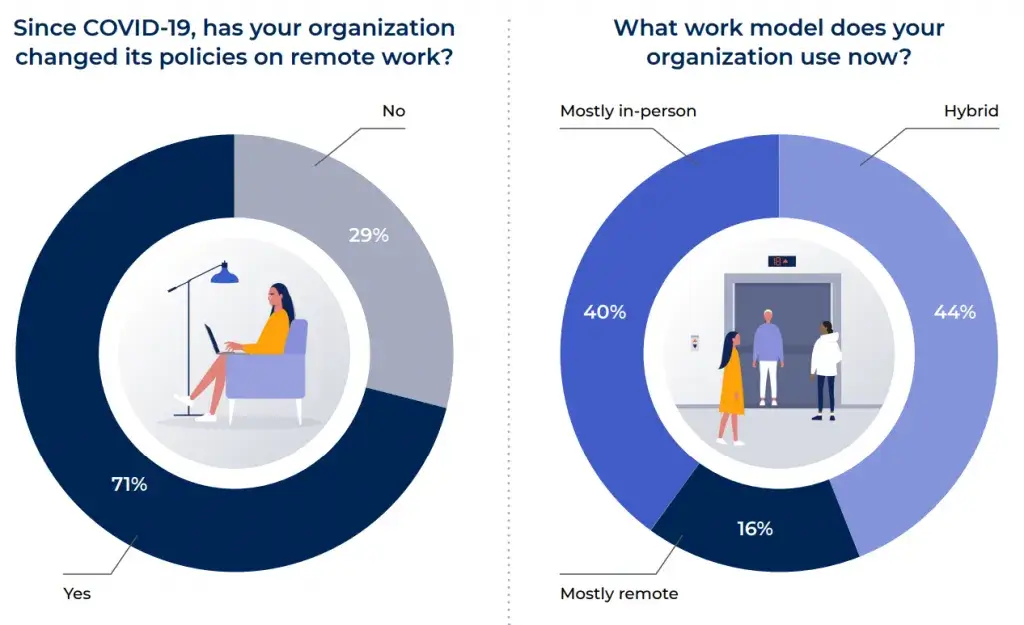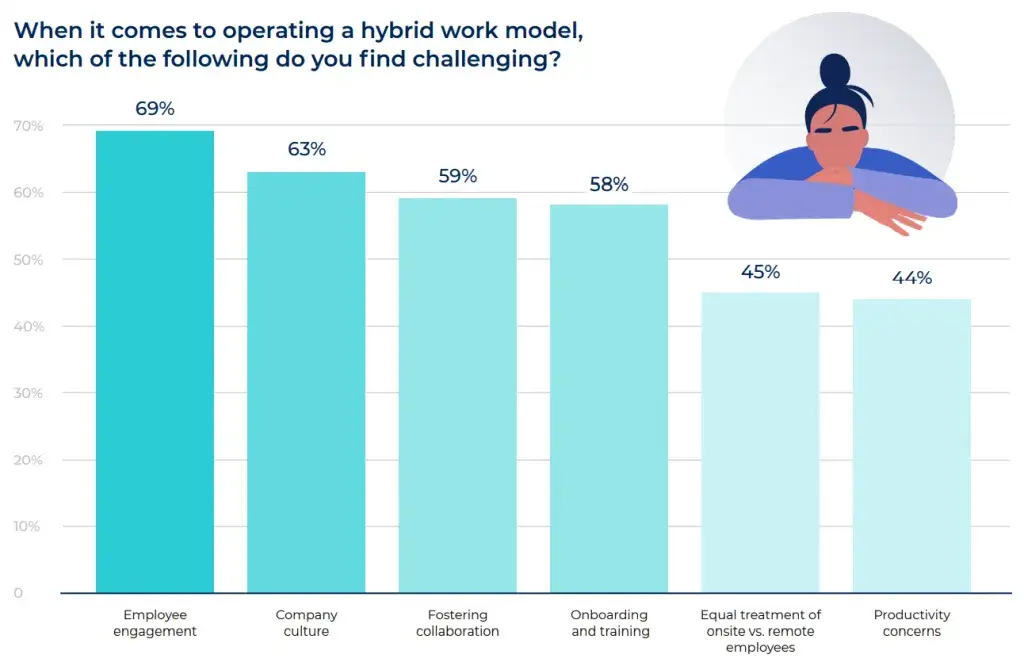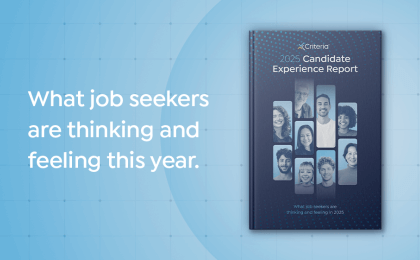In 2020, the world-wide shift to remote work was anything but voluntary. It was a necessary measure that many companies took (if they could) to make things safer for their employees as the virus and lockdowns spread. As 2021 draws to a close and the pandemic drags on, many have questions about the future of remote work. Was it just a temporary measure? Or is remote work here to stay?
In our 2021 Hiring Benchmark Report, we found that 71% of organizations changed their remote work policies in response to COVID-19. According to our most recent data, 16% of organizations mostly remote and 40% are still mostly in-person. But the majority – 44% of respondents – are using the hybrid model.

And early data shows that it’s this hybrid model that’s most likely to stick around post-pandemic. The way we work has evolved – it’s unlikely that the packed pre-pandemic offices will be the norm again. For starters, hybrid models allow for the best of both worlds. Remote days offer employees highly desired flexibility, while in-person days help employees foster strong working relationships.
But the hybrid model isn’t without its own challenges. Such a monumental shift in how many businesses function is sure to cause a few gears to grind. Of the 44% of survey respondents who have adopted the hybrid model, their main worry is employee engagement, with 69% of them finding it to be a challenge. Other top concerns include maintaining company culture, fostering collaboration, as well as onboarding and training of new employees.

But if the first couple years of the 2020s have taught us anything, it's that we're highly adaptable. While these hurdles are anything but easy to overcome, the future is clear: businesses and people alike will evolve to jump over them. Remote work has created immense opportunity (alongside immense disruption) and it’s not going to disappear in the coming years.
If you’re curious about what other trends we uncovered, download your copy of the 2021 Hiring Benchmark Report today.





